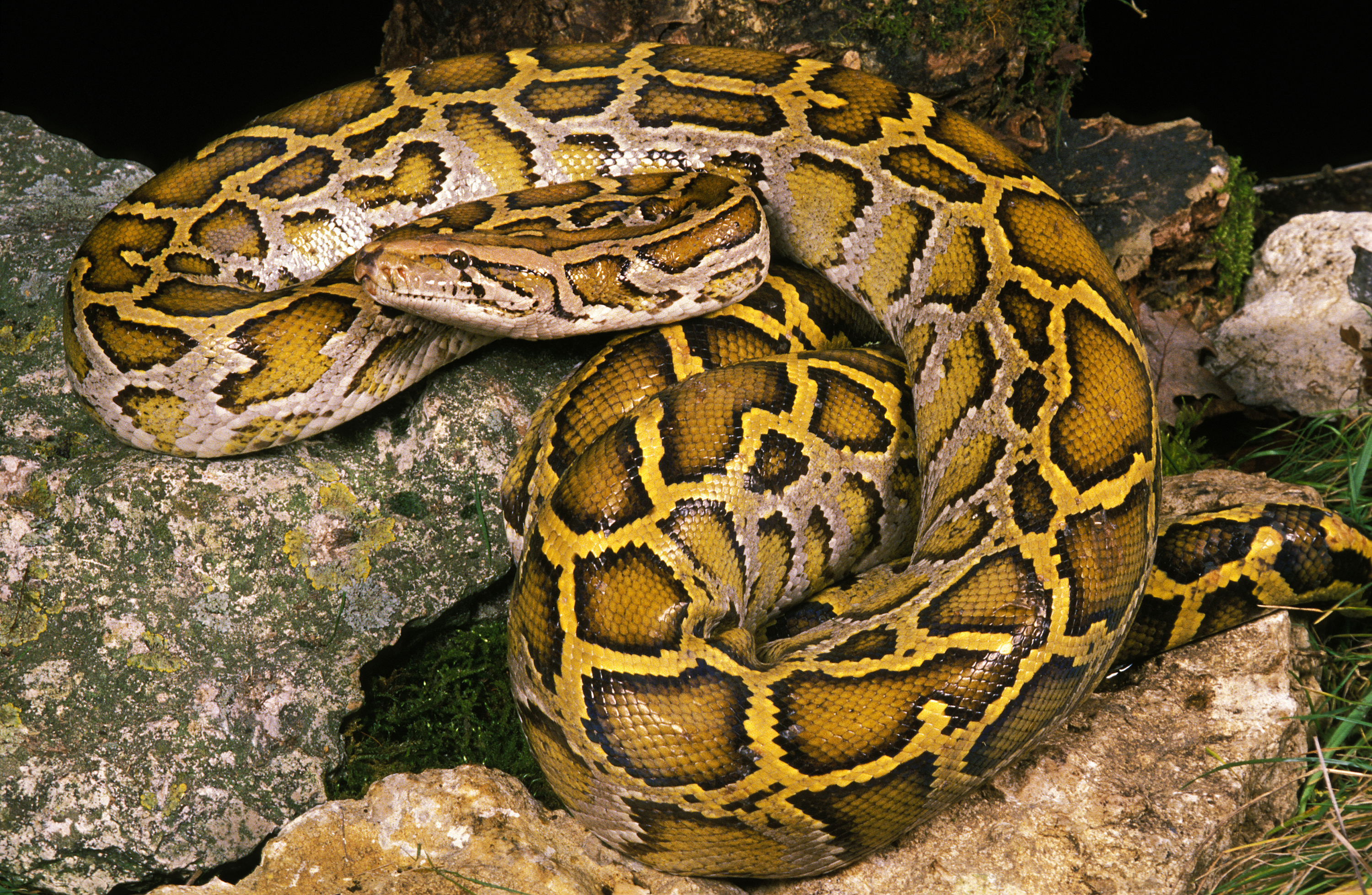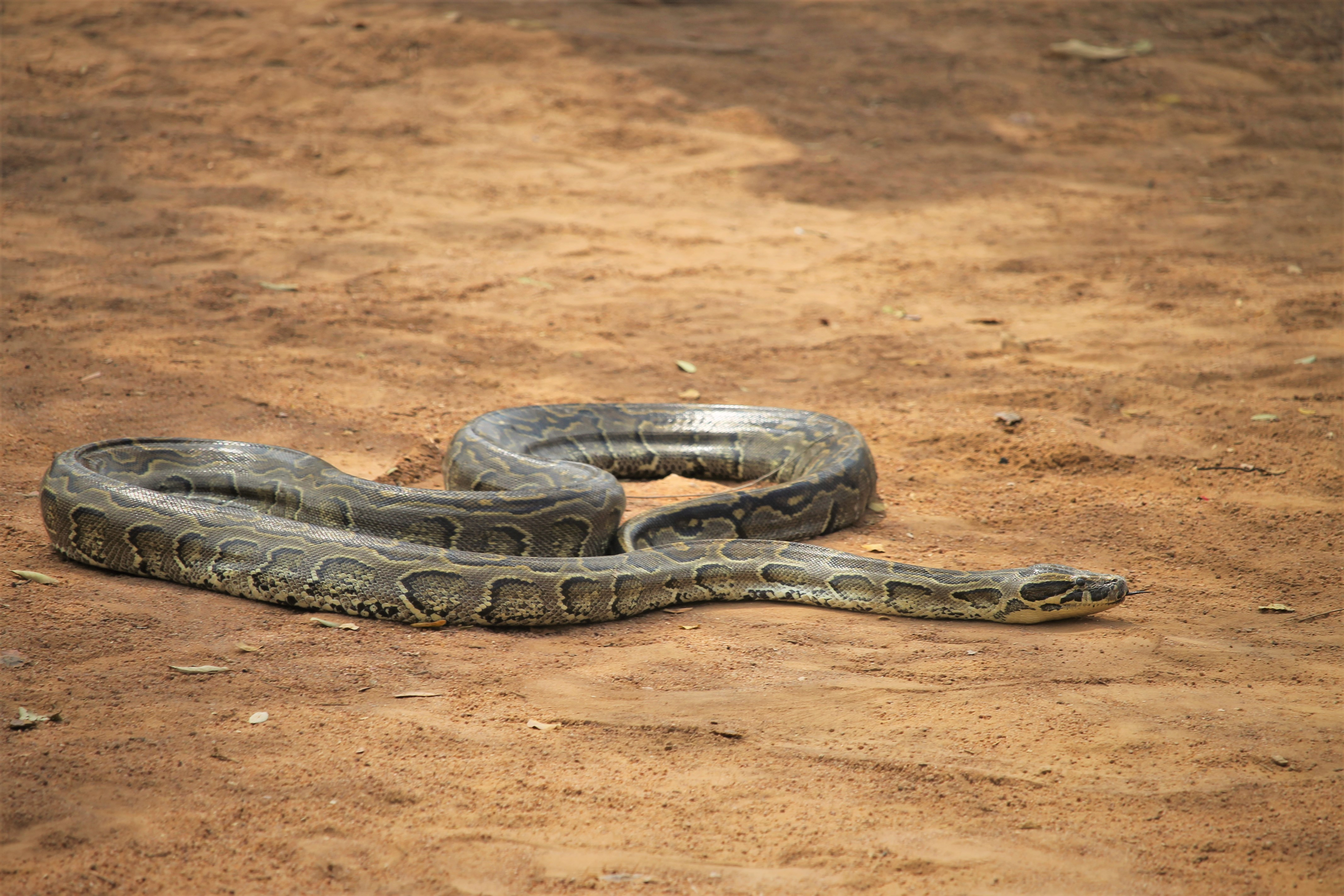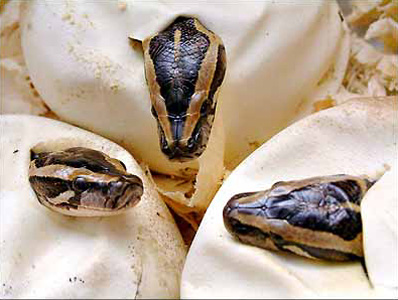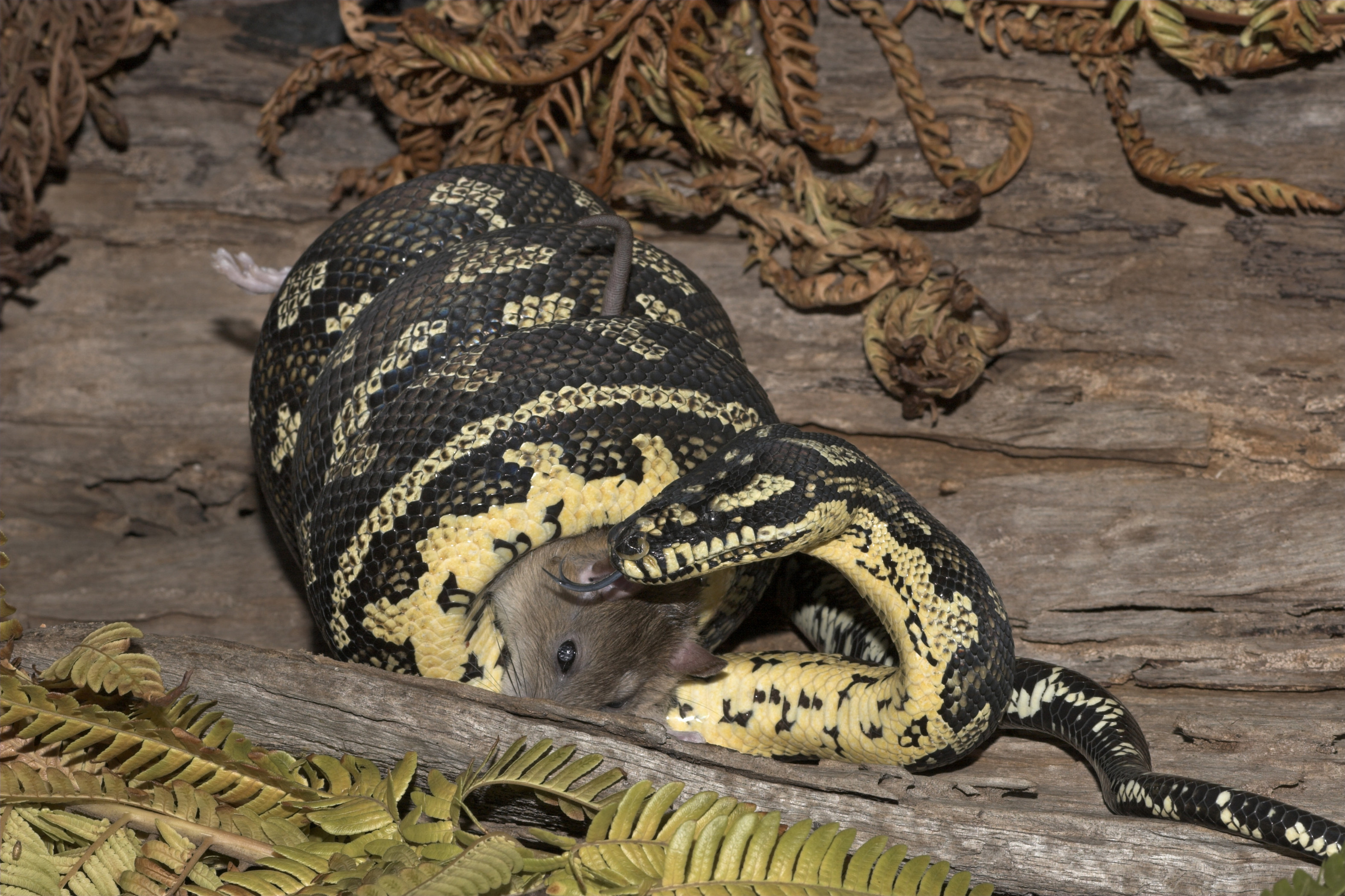Python << PY thahn >> is the name for a group of snakes, some of which rank among the world’s largest. Pythons live in southeastern Asia, India, the Pacific Islands, Africa, and Australia.

Two kinds of pythons, the reticulated python of southeastern Asia and the African rock python, can grow 30 feet (9 meters) long or more. Only the green anaconda of South America rivals these pythons in length. The Indian python of southeastern Asia and India measures about 20 feet (6 meters) long. Other pythons grow much smaller. One of the smallest, the pygmy python of western Australia, reaches only about 2 feet (61 centimeters) in length. The brightly colored green tree python measures up to about 7 feet (2 meters) long. It lives in New Guinea, northeastern Australia, and nearby islands.

Pythons usually eat lizards and small mammals. But larger pythons may sometimes kill big animals, including wild pigs that weigh about 100 pounds (45 kilograms). Pythons are called constrictors because they squeeze their prey to death. They wind themselves around the prey and tighten their coils. To kill the animal, they squeeze just hard enough to stop its breathing and blood circulation. Pythons swallow their prey whole. A large python may take many days to digest a big animal.
Many pythons live in rugged tropical forests with heavy rainfall. Others inhabit regions with low, dense vegetation. Almost all pythons swim and climb well.
Like most snakes, pythons hatch from eggs. The number of eggs in a python nest varies greatly. Some may have about 100 eggs. A female python coils around her eggs until they hatch. Many large pythons incubate their eggs, or keep them warm with heat from their bodies. Incubation, which is unusual in snakes, helps the eggs hatch more quickly.
The Burmese python has colonized much of Florida, especially the Florida Everglades, in the United States. There, the python is an invasive species—that is, an introduced species that spreads quickly and harms native wildlife. The python eats many native animals and spreads disease. Scientists have captured and removed thousands of pythons from the Everglades. Florida government agencies train hunters to identify, locate, and humanely kill invasive pythons.
See also Boa; Boa constrictor.


